Becoming New Again
Apr 25, 2011
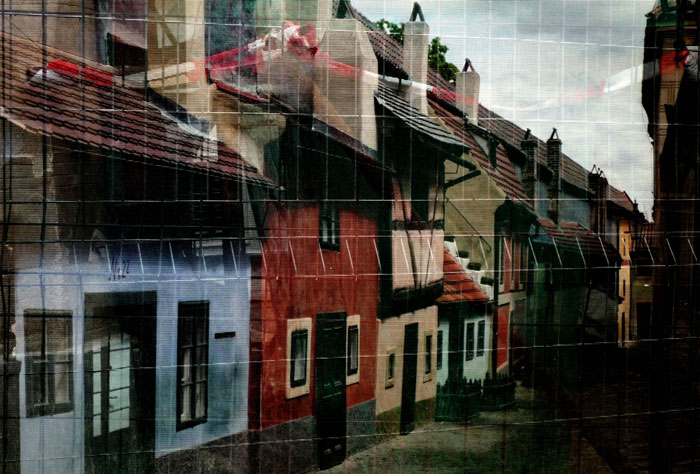 Old houses in Prague, as seen through a screen set up around a construction site across the street. The construction in progress is actually restoration work, so that the street can recover its bygone character.
Old houses in Prague, as seen through a screen set up around a construction site across the street. The construction in progress is actually restoration work, so that the street can recover its bygone character.
Apr 25, 2011
 Old houses in Prague, as seen through a screen set up around a construction site across the street. The construction in progress is actually restoration work, so that the street can recover its bygone character.
Old houses in Prague, as seen through a screen set up around a construction site across the street. The construction in progress is actually restoration work, so that the street can recover its bygone character.
Mar 22, 2012
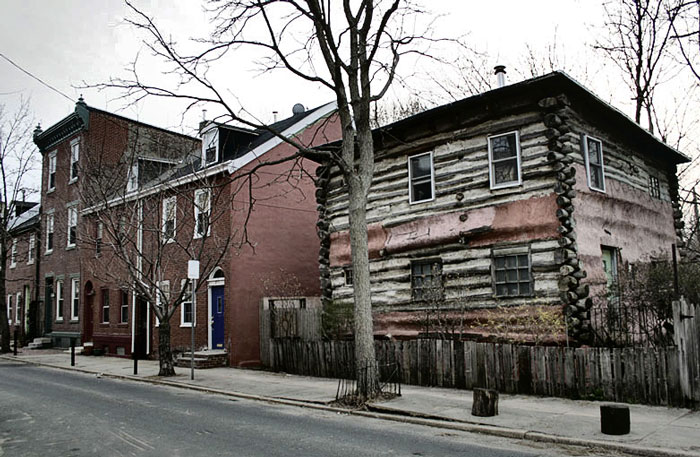 Philadelphia is a city of brick row houses, block upon block, mile after mile. But this house on Lawrence Street in Northern Liberties looks a little different; for one thing, it's detached from all its neighbors, set back from the street in a large fenced yard. And for another thing, well, it's a log cabin. Two stories high, a citified height, but still, unquestionably, a log cabin.
Philadelphia is a city of brick row houses, block upon block, mile after mile. But this house on Lawrence Street in Northern Liberties looks a little different; for one thing, it's detached from all its neighbors, set back from the street in a large fenced yard. And for another thing, well, it's a log cabin. Two stories high, a citified height, but still, unquestionably, a log cabin.
It doesn't date back to the "real" log-cabin age, however. About a quarter-century ago, in the mid-1980s, an artist named Jeff Thomas put the cabin together from a load of logs trucked in from West Virginia; its stylistic allusion, we're told, is to the back-to-the-landers of the 1960s and early '70s. In the 1980s, Thomas and other artists then settling in the Northern Liberties section of Philadelphia were recolonizing a city landscape of abandoned factories, decrepit warehouses, vacant lots, and boarded-up, blighted homes. Their pioneering spirit, embodied in Thomas's house, succeeded only too well, and the cabin is now surrounded by renovated homes that cost way too much for a struggling artist.
Jun 22, 2012
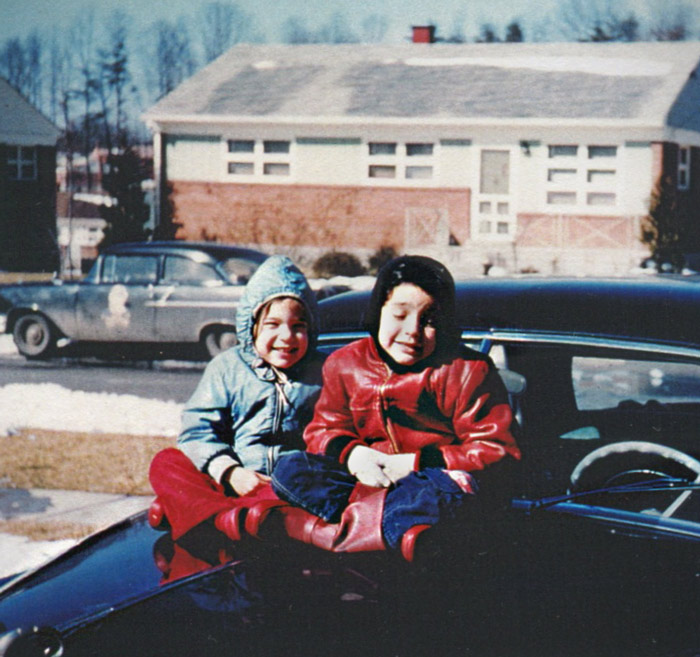 In the winter of 1957, my little sister Carol and I posed for a picture on the hood of my grandfather's Chevy, in the driveway next to our house in Silver Spring, Maryland. The house in the background across the street was identical to ours and to all the others in the neighborhood.
In the winter of 1957, my little sister Carol and I posed for a picture on the hood of my grandfather's Chevy, in the driveway next to our house in Silver Spring, Maryland. The house in the background across the street was identical to ours and to all the others in the neighborhood.
Neighborhoods like ours were called GI tracts back then, new subdivisions built for the baby-booming families of World War II veterans, who bought the houses with no down payment and bargain-rate VA mortgages. Every house was soon overflowing with kids; seven children grew up in that house across the street, and the houses on either side of ours both held six children. We never ran out of kids to play with.
A brand new school was built for us; it opened the year before I started kindergarten and was overcrowded from day one. But it was only a few short years, maybe fifteen or twenty, before the demographic bulge had moved on and MacDonald Knolls Elementary School actually closed down for lack of kids. The school building is now privately owned, used for office space with a small daycare center in one former classroom.
The neighborhood in general has morphed from GI tract to what I guess would be designated an ethnic community; most of the families living there now are Vietnamese, as are the businesses in nearby shopping centers.
I took the picture below of our old house about five years ago. It's a leafy, tree-shaded kind of place now, which was definitely not the case back in the day, though neighbors had put out small trees, supported by guy wires that we used to trip over. The house itself looks well-kept and largely unchanged, except for new windows and siding and a fancy new storm door.
Perhaps the most significant change is in the driveway: there are two cars there now, which is perfectly normal in 21st-century America, but back in the 1950s each family had only a single car. On Monday mornings, after the fathers drove off to work, the neighborhood was pretty much empty of cars and we kids had the streets to ourselves.
The second car is necessary because middle-class life now requires a second wage-earner. I read recently that since the Great Recession more and more households are needing a third wage-earner to make ends meet; new household formation in this country is almost at a standstill.
Jul 25, 2013
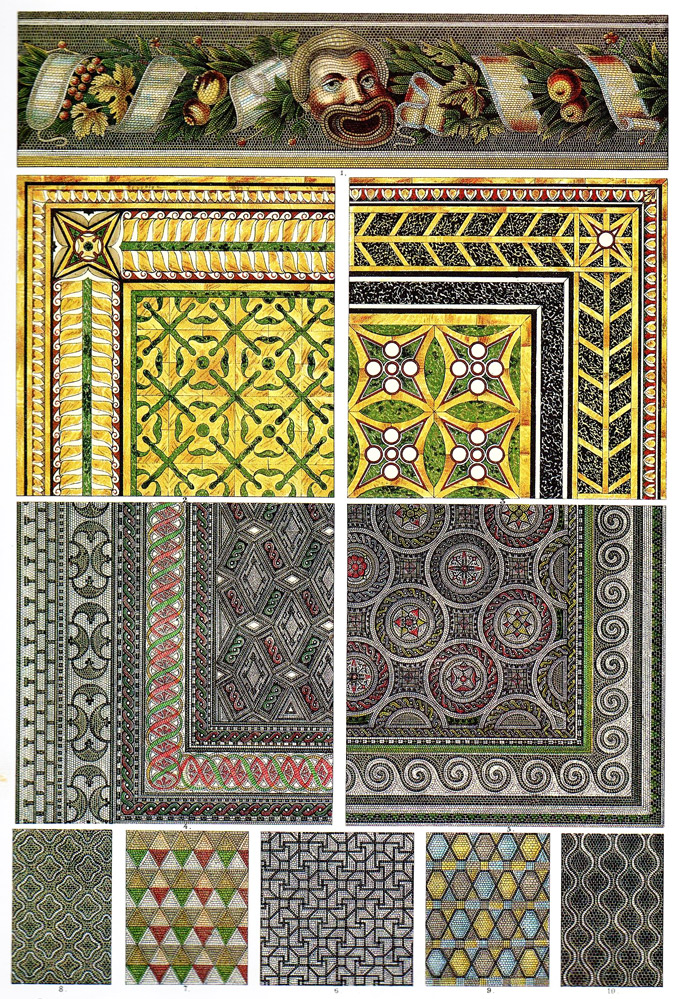 Roman mosaic floors (plus one freize), mainly from Pompeii.
Roman mosaic floors (plus one freize), mainly from Pompeii.
This image is a reproduction of one page from Heinrich Dolmetsch's compilation of craftsmanship and design in ancient and modern civilizations, first published in 1887. There is more.
May 1, 2017
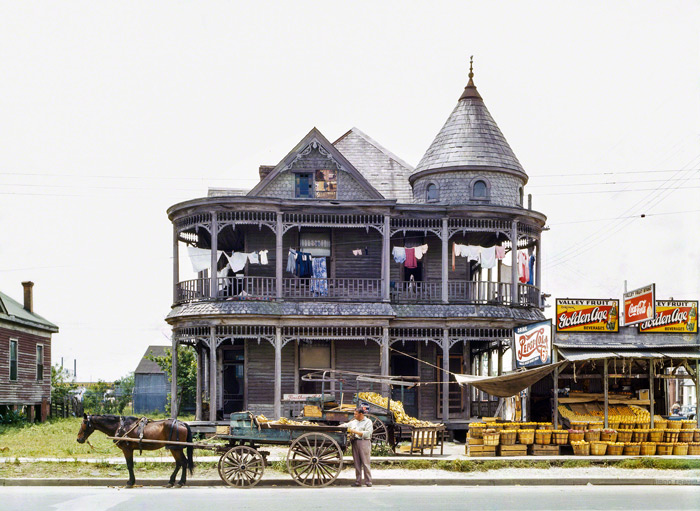 Abe Cweren, an immigrant from Poland who arrived in Texas in 1922, is unloading bananas from his wagon in 1943, at the Valley Fruit stand on Franklin Street in Houston.
Abe Cweren, an immigrant from Poland who arrived in Texas in 1922, is unloading bananas from his wagon in 1943, at the Valley Fruit stand on Franklin Street in Houston.
The house behind the fruit stand was built before 1900 by a family named Fredericks; in the 1940 census, three years before this photo was taken, the home's inhabitants were listed as a 30-year-old night-club chef named Rudolph Martinez, his wife Candalanca, son Rudolph Jr., sister Isabell Samora, and her two children, Raymond and Joe Louis.
The banana man wrote on the side of his wagon, "Jockey Cweren, Kentucky Derby."